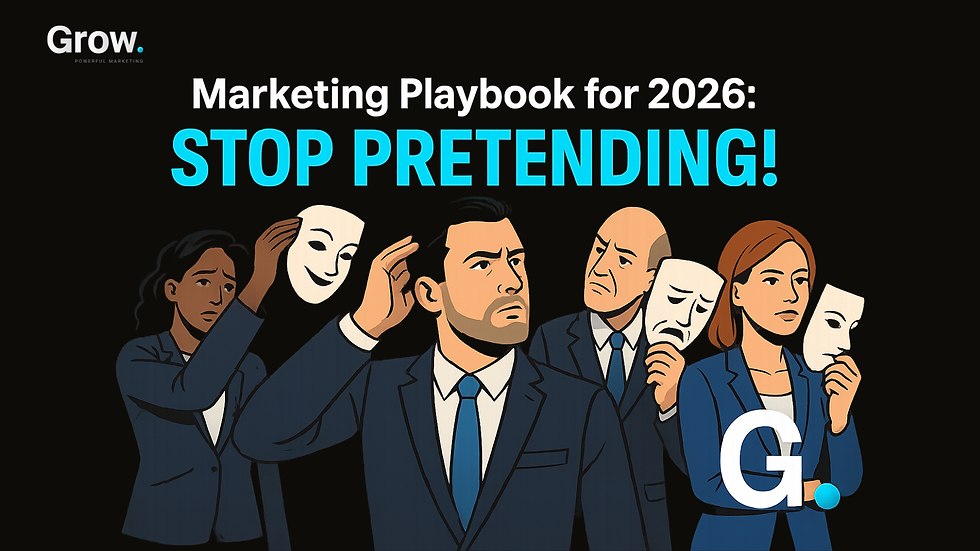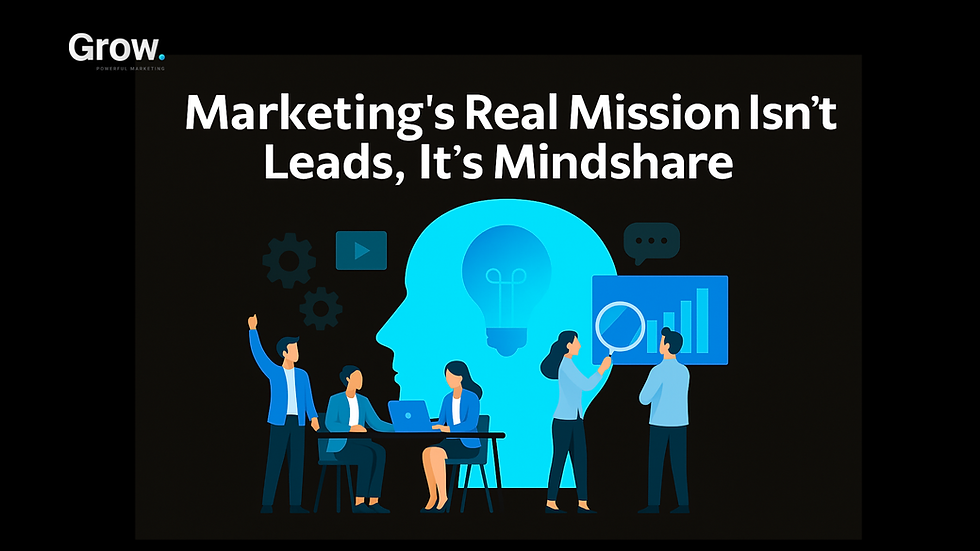SaaStr is right AND wrong about Fractional CMOs
- Grow.
- Jan 19, 2023
- 4 min read
Updated: Jan 30, 2023

I'm a big fan of SaaStr (the world’s largest community for business software). They have a huge impact on the success of innovation companies.
Last week, Jason Lemkin of SaaStr published a post titled, “Fractional CROs and CMOs: The Only Times I’ve Ever Seen Them Work”. There’s been a lot of feedback on it in the Fractional CMO community I lead. Let me give my take since I live and build the world of fractional or interim CMOs every single day. I see it work well and I see when it fails.
I also LOVE that this is a part of the conversation in the #saas ecosystem!
In the article, Jason mentions “The market is flooded with folks that are now ‘Fractional CROs’ and Fractional CMOs’. He’s right. Not only are well vetted and proven people changing their minds about the full-time relationship with clients, there’s a horrible phenomenon taking place that’s bringing the flood: there are too many fake fractional CMOs around and causing a ton of confusion. In my article, BEWARE of FAKE Fractional CMOs (September 12, 2022), I talk about this trend that is being led by sketchy mastermind groups that tell graphic designers, copywriters, digital agencies and other non-qualified people that if they want to make more money, then they need to give themselves a higher title. It’s a scam. It’s bullshit.

His article also munges together the concept of a fractional CMO and fractional CRO. This is a mistake. A fractional CRO and fractional CMO are brought in to achieve very different goals. In my experience, it’s significantly harder to find and fit a fractional CRO than it is a fractional CMO.
The success we have as a team of interim CMOs for B2B tech companies comes from the fact that we are usually brought in as the first true marketing leader of a company so that they can figure out which marketing models, strategies, and tactics will work.
This is more easily achieved when you’ve got: 1) Well vetted and proven interim CMOs who know how to get in and solve key problems and build a marketing architecture; 2) Specific goals that need to be accomplished; 3) the experience in the startup/emerging tech world; and 4) (probably the most important) willing and able to get their hands dirty in the weeds and get deliverables done.

In our case, we take the time needed to match the industry background, the personality styles of the CEO/interim CMO, and an understanding of the tactics that need to be achieved to result in success. The investment in time up front yields a higher chance of success.
One key problem, which is again a messaging problem, is that either a #fractionalCMO isn’t actually qualified to do the job, or has spent so much time in the consulting realm, that they forgot how to get shit done. I dive into this challenge in my article, Understanding Fractional CMOs vs. Marketing Consultants.

In the article, Jason says that there are only two scenarios in which he’s seen it successfully implemented: “If the fractional CRO/CMO works at least 60% and owns the function and its core KPI for real”; and “if the fractional CRO/CMO, as part of the job,finds and closes the full-time VP of Sales/Marketing for you”. I see where he’s coming from but again - I get the sense that he’s had a hard time with the quality and attitude of the Fractional CMO/CRO folks he’s met.

I prefer to think of our team of iCMOs as truly “interim”. They’re meant to be a stepping stone in the growth program, they’re supposed to get a company to a next level, and should set everything up for the company to be ready for a full-time CMO or VP marketing. In fact, we have a step-by-step guide to exit a client engagement with grace and elegance.
GROW’s average client relationship is 8.5 months. Our average engagement level is approx. 1.5 days per week and our overall NPS is 95%, so we’re doing something right.
So, some key takeaways I’d like you to remember:
Make sure you’re using a true CMO on an interim basis - look beyond the title
Have specific goals in mind of what success should look like
Know the difference between an interim CMO and a consultant
Remember that’s not a permanent solution - it’s a stepping stone to a next phase of the company.
The company must make sure to keep the interim CMO informed and in the same communications loop as other company executives.
Within the next 12 to 18 months, every single marketing program will incorporate AI. Writing, design, presentations, sales outreach - almost everything will be impacted by AI. This will make a HUGE difference on the impact of an interim CMO - but only if those CMOs are prepared and embrace AI. It will be the ultimate differentiator, and empower companies to do so much more with less. Let's revisit this discussion in 12 months. Sound good?
Hope this helps!
Brett
Want to hear more from GROW Powerful? Visit our website and check out our Grow Up With GROW podcast. Available wherever you get your podcasts. You can also subscribe to our LinkedIn newsletter.




Comments